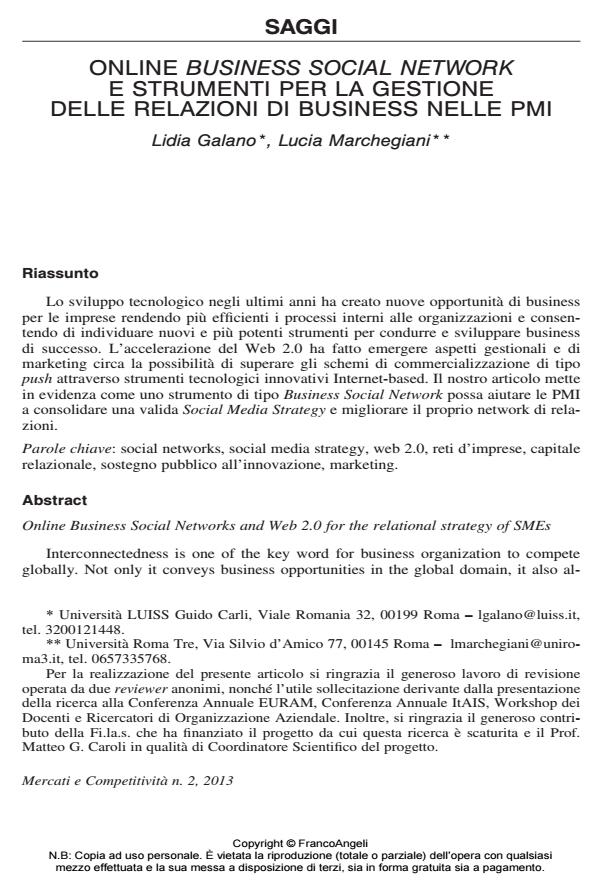Online Business Social Networks and Web 2.0 for the relational strategy of SMEs
Journal title MERCATI & COMPETITIVITÀ
Author/s Lidia Galano, Lucia Marchegiani
Publishing Year 2013 Issue 2013/2
Language Italian Pages 24 P. 59-82 File size 814 KB
DOI 10.3280/MC2013-002004
DOI is like a bar code for intellectual property: to have more infomation
click here
Below, you can see the article first page
If you want to buy this article in PDF format, you can do it, following the instructions to buy download credits

FrancoAngeli is member of Publishers International Linking Association, Inc (PILA), a not-for-profit association which run the CrossRef service enabling links to and from online scholarly content.
Interconnectedness is one of the key word for business organization to compete globally. Not only it conveys business opportunities in the global domain, it also al- lows firms to join networks where knowledge can circulate smoothly and create value. Nevertheless, SMEs still suffer from liability of smallness, when it comes to joining valuable networks and mechanisms of knowledge sharing and co-creation. In this context, ICT and social networks may offer a solution. This paper offers a piece of research on Business Social Networks, and shed more light on the Social Media Strategy for SMEs.
Keywords: Social network, social media strategy, web 2.0, business social networks, relational capital, social marketing.
Lidia Galano, Lucia Marchegiani, Online business social network e strumenti per la gestione delle relazioni di business nelle PMI in "MERCATI & COMPETITIVITÀ" 2/2013, pp 59-82, DOI: 10.3280/MC2013-002004